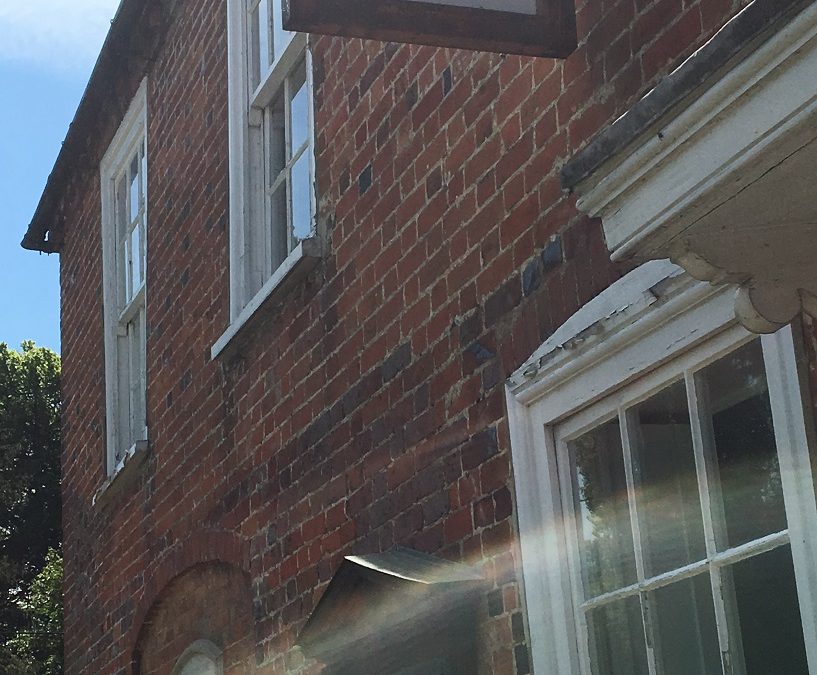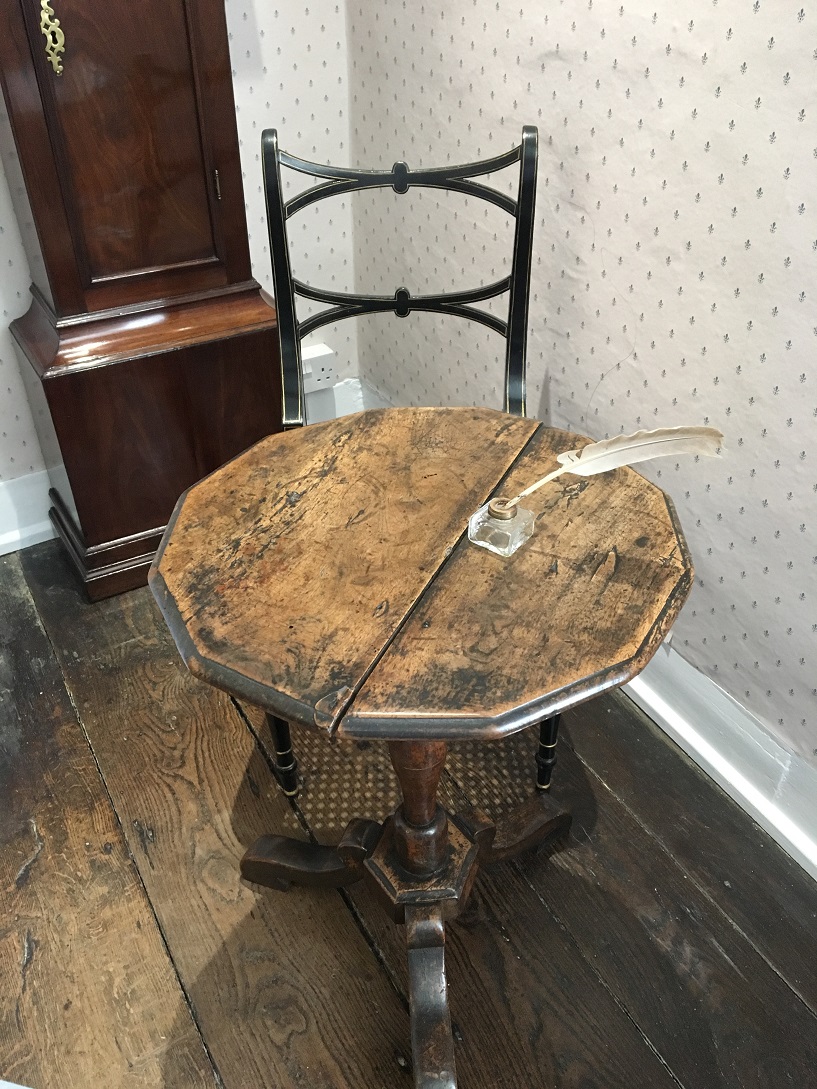
Jane Austen’s tiny writing table
By Eileen Ogintz
CHAWTON, England — The writing table and chair are impossibly small—child size really.
Yet this is where Jane Austen was her most prolific—writing in the morning after breakfast in this country cottage at this tiny table. She lived with her mother, her sister and a family friend in this cottage that was part of her brother’s estate from 1809 until just before her death (she was just 41!) on July 15, 1817. There are many anniversary events and programs in honor of the 200th anniversary of her death. Though not well known when she died, today Austen is loved around the world and considered one of England’s greatest women writers.
During those years, Sense and Sensibility, Pride and Prejudice, Mansfield Park and Emma were all published anonymously, as was often the custom for women writers of the day. She wrote Persuasion and was at work on another novel Sanditon, which she never finished. It was in this house that Jane’s genius flourished after years of poverty and living with various relatives where she wrote, revised and published all her major works.
Today the cottage in the tiny, picturesque village of Chawton (a short drive from Winchester and near the town of Alton) is Jane Austen’s House Museum and a must-see site for Austen fans, like Megan Rice, from Salt Lake City, who has a master’s degree in English literature and has brought her grandmother, sister and good friend on a literary trip to Britain, leaving her husband and three kids at home.

Jane Austen books
“I thought I needed to come,” she explained. (She even has a hashtag — #MeganRiceofficial book club tour). Of course there is #JaneAusten200 and #41Objects for an exhibit in the museum like a shawl Austen owned, her writing table, a needle case she made as a gift, an illustration for Pride and Prejudice…among other things.
She shared an impossibly small bed with her sister Cassandra who also never married after her fiancé died. Many say because Cassandra took over the running of the household, Jane was free to focus on her writing.
This museum typically gets 30,000 visitors a year; this year, that is expected to double. It’s not easy to get here. Rice and her family are on a road trip—a decided challenge with the drivers sitting on the right side in the U.K. You can take a train to Alton station from London (or to Winchester if you want to see Jane’s grave in the Winchester Cathedral and the new Austen exhibit in the Winchester Discovery Center) followed by a bus or two.
It’s worth the trip. Not only are the rolling hills of Hampshire — what many imagine as the “real” England — there is even a thatched house nearby. But it is time to celebrate Austen and the women writers who inspired her and may be largely forgotten.
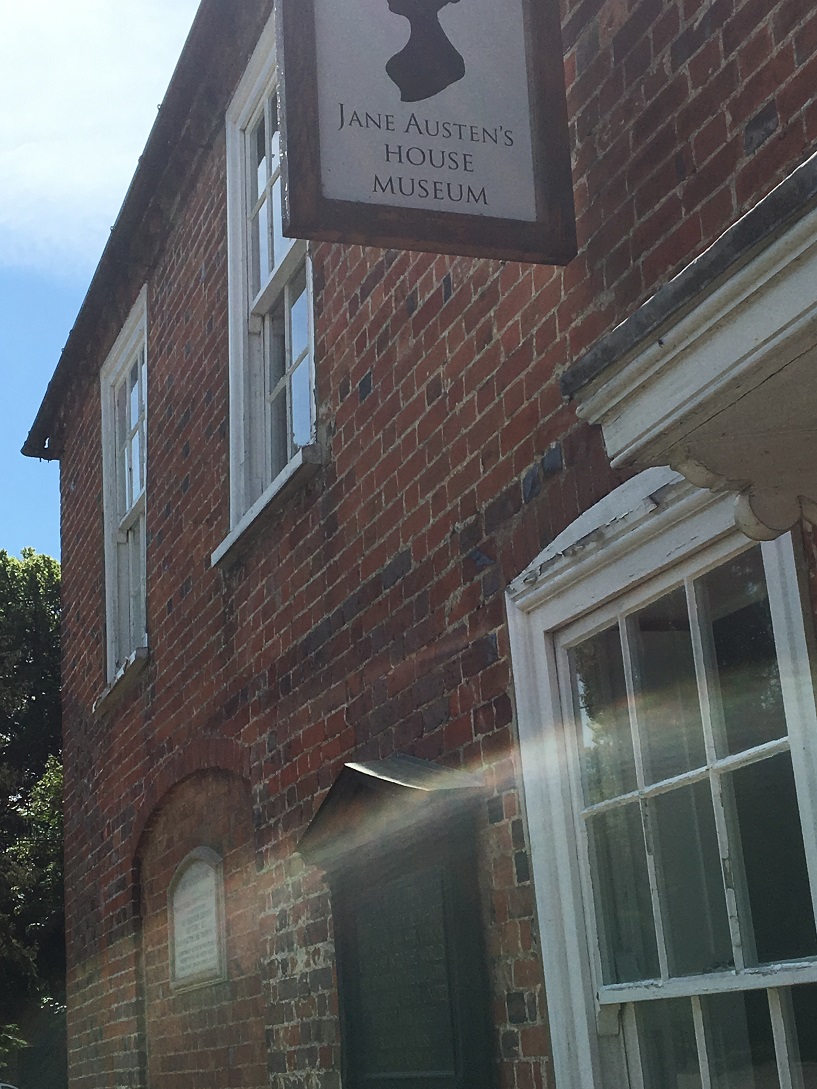
Jane Austens House Museum
Nearby is the Chawton House Library, once one of the estates from Jane’s brother Edward, who inherited a fortune from a distant cousin who had no children. Today it conserves a unique collection of women’s writing (1600-1830), hoping to foster understanding of early women writers. The restoration of the house, the collection and making it into a library was thanks to Sandy Lerner of Cisco Systems, for which she has been awarded the order of the British Empire. Though novels are the heart of the collection, there are books on cookery and midwifery, travel writing, poetry, children’s books, history and more.
“Men didn’t take women writers seriously,” said Anthony Hughes-Onslow, the general manager of the library as he showed us around the beautiful house and gardens. “Most of these writers have been forgotten.”
They used pseudonyms, or published anonymously, as Austen did. Austen’s rock star status, of course, is the exception.
Today, scholars do research here and school groups come (programs include dress up in 18th Century outfits and ballroom dancing). There are beautiful gardens including a traditional walled garden (once used for vegetables because the brick walls kept the plants cooler) and now, a special garden inspired by Elizabeth Blackwell’s A ciropi Jerba: A guide to different plants and their uses in medicine. Blackwell started this project to support herself and her child and to free her husband from debtor’s prison, explained Hughes-Onslow.
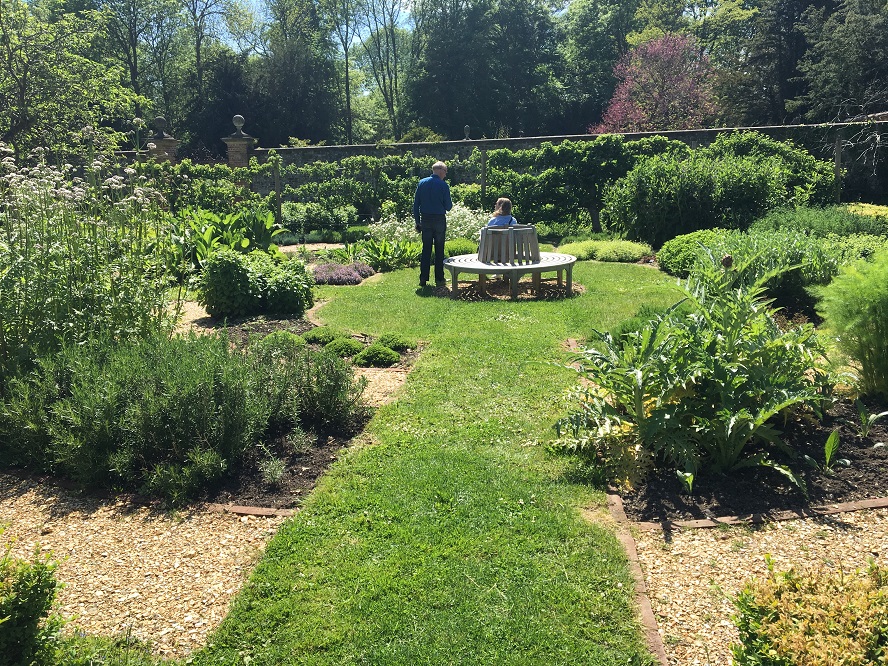
Elizabeth Blackwells Medicinal Gardens
Blackwell painstakingly drew each plant, engraved the copper plates for printing and then hand colored the images. It was published in installments from 1737-1739 and was successful enough to win her husband’s release. The garden design is concentrated on baths between planted beds with each quadrant containing ten plants described by Blackwell for a particular part of the body—head, chest, digestion…skin. The garden symbolizes how all the body systems are connected. So there is St. John’s wart (depression), White Horehound (lung congestion). House Leeks (for burns) and others.
There is a new exhibit opening about 18th Century author Elizabeth, a prolific writer, playwright, poet as well as mother and wife. Little is known about her.
People also come to this grand house to see where Austen might have attended parties (she loved to dance) or share dinner with her brother and family, stroll in the gardens and a woodland path designed for ladies to take their exercise (she was a huge walker.
Austen’s mother and sister, both named Cassandra, are buried in the churchyard just down the hill; Austin is buried in Winchester Cathedral where today there is a also a plaque honoring her. As was custom of the time, her gravestone in the floor of the cathedral makes no mention of her as a writer. For true Austen fans, walk around to see the house (NO. 8 College Street) where she lived the last two months of her life.
She had come to Winchester, at the time a well established medical center, to seek treatment for her undiagnosed illness—she had been sick the last 18 months of her life and grew steadily worse. Even today, scholars don’t know what ailed her—possibly Addison’s Disease, tuberculosis or a blood cancer. Today the house is used by masters at Winchester College, one of England’s finest public schools, so it’s not possible to go inside. But there is now a small exhibit at Winchester Cathedral — Jane Austin 200: A life in Winchester. A newly opened The Mysterious Miss Austen exhibit, a short walk from the famous cathedral, explores her work and her relationship to this part of England that so inspired her. There are five portraits of Austen (people still aren’t quite sure what she looked like), a surviving manuscript in her own hand, a silk coat that is one of the only garments anywhere that scholars are certain was hers, first editions and personal letters.
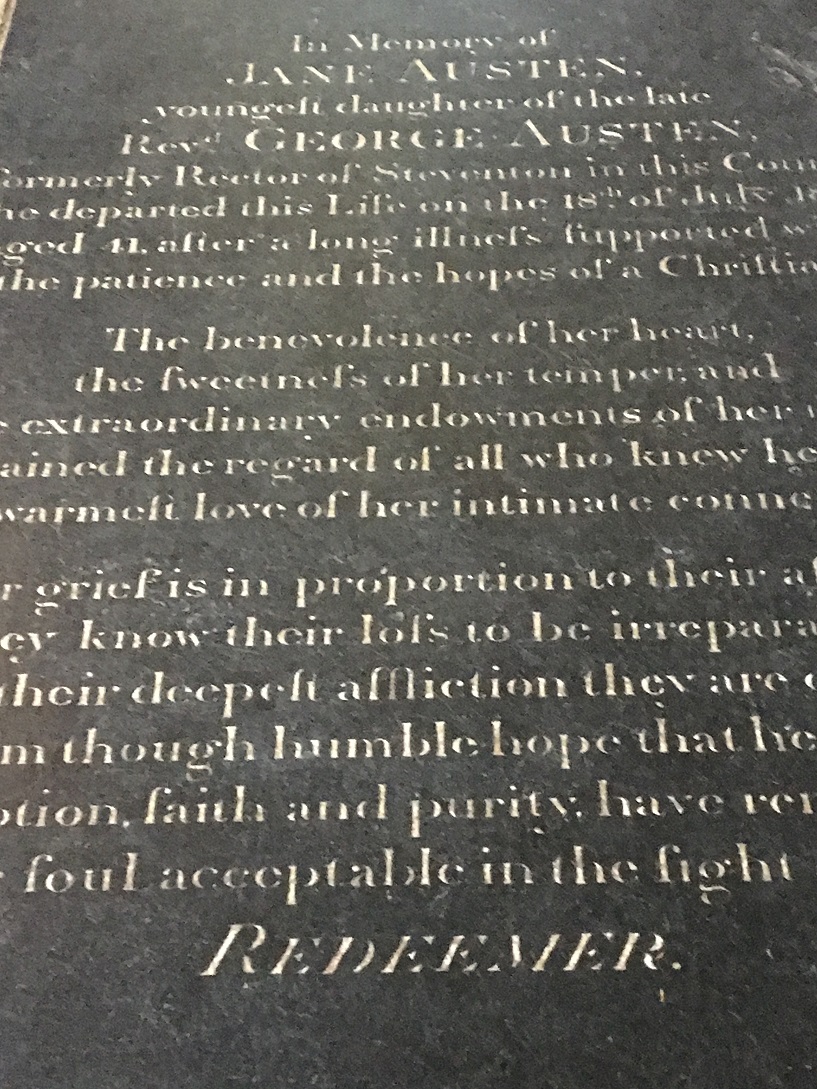
Memorial to Jane Austen at Winchester Cathedral
What’s the big deal about Austen? She had an acute ear for the role of women in her time, the hypocrisy of the social classes and the ability to have her characters grow, learn and change . There are of course movies and TV series of her work, dating back to the 1940 Pride and Prejudice with Laurence Olivier and Greer Garson but more recently, Clueless (1996), Bridget Jones’s Diary (2001), Pride and Prejudice and Zombies (2009) and AustenLand (2013), among others.
There are talks and walks and tours. Check out www.hiddenbritaintours.com and www.janeausten200.co.uk. At the Museum, there are workshops on everything from writing to printmaking to quilting to gardening. (Contribute to the community story quilt being done with quilters around the world to explore the impact of Austen’s life.) Also see the quilt Austen had made with her mother and sister, see what their kitchen would have been like and bedroom.
Go for a walk in the countryside as she did. Bring the kids to the museum where they might be able to write with a quill pen, make up their own story in a large dollhouse or put together a puzzle of rooms to make an 18th Century home.
Clearly Austen’s influence is on the rise as new generations discover her. At the Discover Centre exhibit, visitors—some who had come from around the world—are invited to explain what Austen has meant to them.
“Pride and Prejudice was one of the first books I simply couldn’t put down,” one wrote.
“I named my cat after my favorite literary character, Mr. Darcy,” said another.
“She was a role model for the past and future,” said a third.
Bravo, Jane.

